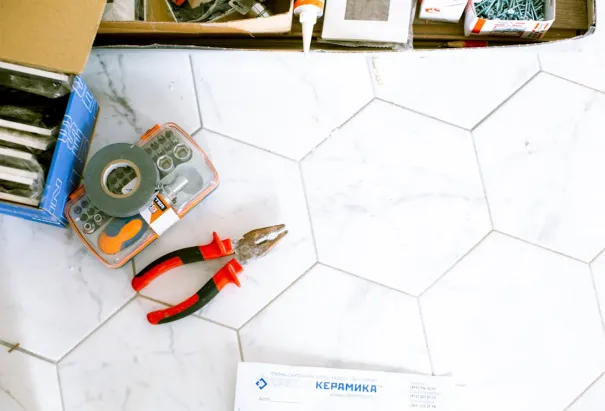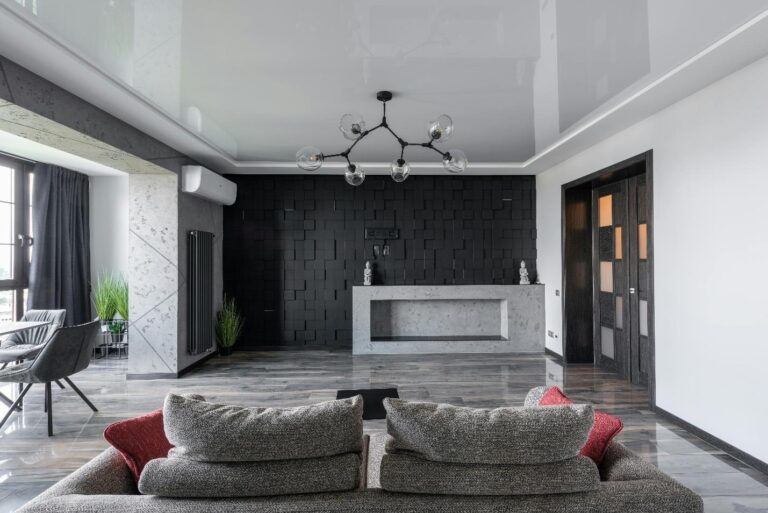Top Home Improvement Upgrades for Modern Living
Ever looked around your Ohio home and thought, “When did this place get so outdated?” It’s not just peeling paint or the faucet that wheezes like it’s haunted. It’s the fact that life has changed faster than the walls around us. Homes built for past decades weren’t made to support remote work, smart tech, or whatever the current definition of “open concept” has turned into.
In this blog, we will share the top home improvement upgrades that bring real function, comfort, and efficiency into modern daily life.
Also Read: The importance of having balcony leaks repaired fast
Start with What You Can’t See but Always Feel
Home upgrades that improve how a house feels often go unnoticed—until they aren’t there. One of the most impactful examples is temperature control. You notice the cold more when the furnace wheezes through a winter morning like it’s giving its final performance. You also notice it in your energy bills.
A lot of older homes are working with heating systems that haven’t aged well. They may still technically work, but they’re inefficient, loud, or just plain unpredictable. And as climate patterns shift, with colder snaps hitting longer and harder than expected, investing in reliable heat isn’t optional anymore. That’s why furnace replacement in Blue Ash, OH is becoming more common. Local professionals understand how the winters in Ohio hit, and newer systems don’t just provide warmth—they offer quieter operation, smart thermostat integration, and higher energy efficiency.
It’s not flashy. But neither is freezing at 3 a.m. A furnace upgrade is one of those behind-the-scenes changes that affects everything: comfort, safety, monthly costs. For modern living, those things matter more than aesthetic bells and whistles.
Kitchens That Actually Work for How We Eat Now
Post-pandemic, people cook more at home. Not always gourmet meals—just more often. The problem is, most kitchens were designed around a layout from another era. The triangle setup of fridge, stove, sink doesn’t always apply when you’ve got two people cooking, a third person working on a laptop at the counter, and a dog sprawled out in the middle of it all.
Modern kitchen upgrades should focus on workflow first. That might mean expanding counter space, removing awkward overhead cabinets that make you duck, or rerouting appliances so you’re not moving in circles. Function isn’t just a buzzword. It’s about making the space match the real rhythm of your daily life.
Storage also matters more now than it did even five years ago. Add deep drawers for pots, pull-out spice racks, corner cabinet inserts. Anything that reduces clutter improves your ability to move, think, and enjoy the space. Kitchens aren’t just where we eat—they’re where everything else happens, too.
Lighting That Does More Than Look Good
A lot of homes still rely on overhead lighting and maybe a lamp in the corner. But newer lighting systems can shift the feel of a space without knocking down a single wall.
Layered lighting—ambient, task, accent—isn’t new. But it’s finally getting its due. Installing dimmable recessed fixtures, under-cabinet LEDs, or even smart bulbs that adjust based on time of day brings depth to a room and helps regulate your energy throughout the day. Especially when working from home, light affects mood more than most people realize.
Good lighting also plays into energy efficiency. Switching to LED saves money over time, and motion sensors or timed settings reduce waste. What used to feel like high-end features now come standard in affordable setups. And the return? Better sleep, lower power bills, and a space that adapts with you.
Bathrooms That Don’t Feel Like Afterthoughts
For years, bathrooms were built as purely functional. Small square, toilet here, shower there. Now, they’re seen more as recovery zones. People want a bathroom that helps them reset—physically and mentally.
That doesn’t require building a spa. Even basic upgrades shift the experience. A rainfall showerhead changes how mornings feel. Heated floors, while a splurge, are deeply appreciated in winter. Replacing old tile with slip-resistant options improves safety without making the space look clinical.
If there’s room for it, adding a second sink or expanding counter space keeps arguments to a minimum. If space is limited, even recessed shelving or a mirrored medicine cabinet with storage can reduce the daily shuffle of products.
Home Offices That Aren’t Just Corners of Bedrooms
Remote and hybrid work aren’t going away. What began as a laptop at the dining table has become a long-term situation, and many homes just weren’t ready for it.
A home office doesn’t require its own room. But it does require intention. Adding built-in desks, sound-absorbing panels, and better lighting creates a space that actually supports focus. Outlets matter. So does a door that closes, if only to separate work from everything else.
Upgrading your internet infrastructure—moving the router, using wired connections, or even installing mesh Wi-Fi—pays off more than most tech gadgets. Productivity lives and dies on connection speed now.
Storage helps, too. Papers pile up. Tech accessories seem to multiply. Without places to put them, the office becomes another junk zone. Keeping the workspace minimal doesn’t mean empty. It means it’s designed to stay useful.
Smart Systems That Actually Make Life Easier
Smart home tech often gets overhyped. But when used with purpose, it simplifies real problems. Smart thermostats adjust temperatures based on your patterns. Smart locks let in guests or workers when you’re away. Leak detectors prevent water damage that can cost thousands.
Even voice-activated assistants have their place—setting timers, turning off lights, playing music. But the key is to use tech that integrates smoothly, not just impresses guests. Focus on systems with long-term support and clear privacy controls.
Security is a growing concern. Smart cameras and motion-detecting lights help monitor the home while you’re away. And as energy costs continue to rise, having control over when and how your home uses power gives you an edge.
Storage That Blends In, Not Bulks Out
Modern homes need to handle more stuff, but no one wants to stare at it. Upgrades that build storage into unused spaces are gaining popularity. Under-stair drawers, bench seating with compartments, vertical shelves inside closets—all add function without sacrificing space.
Garage storage is another overlooked upgrade. Wall-mounted systems or ceiling racks free up floor space and make tools, bikes, and bins easier to access. It’s not about perfection. It’s about not tripping every time you go looking for holiday decorations.
Storage that’s accessible is storage that works. When every item has a place, cleanup takes less time. That reduces stress and increases the feeling that your home works with you—not against you.
The best home upgrades aren’t just about resale value or design trends. They’re about making your space match how you live now. As families shift, routines change, and the world outside remains uncertain, a well-upgraded home becomes an anchor.
Focus on what improves your daily experience. Not what sells in a showroom, not what someone else posted online. Comfort, efficiency, function—that’s modern living. If the upgrades you make check those boxes, you’re already ahead.







